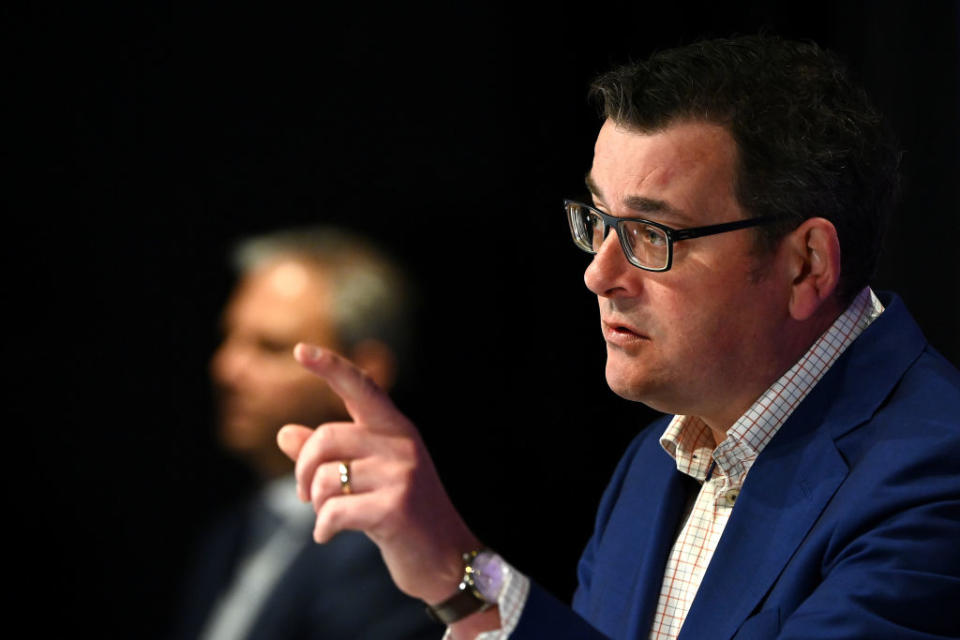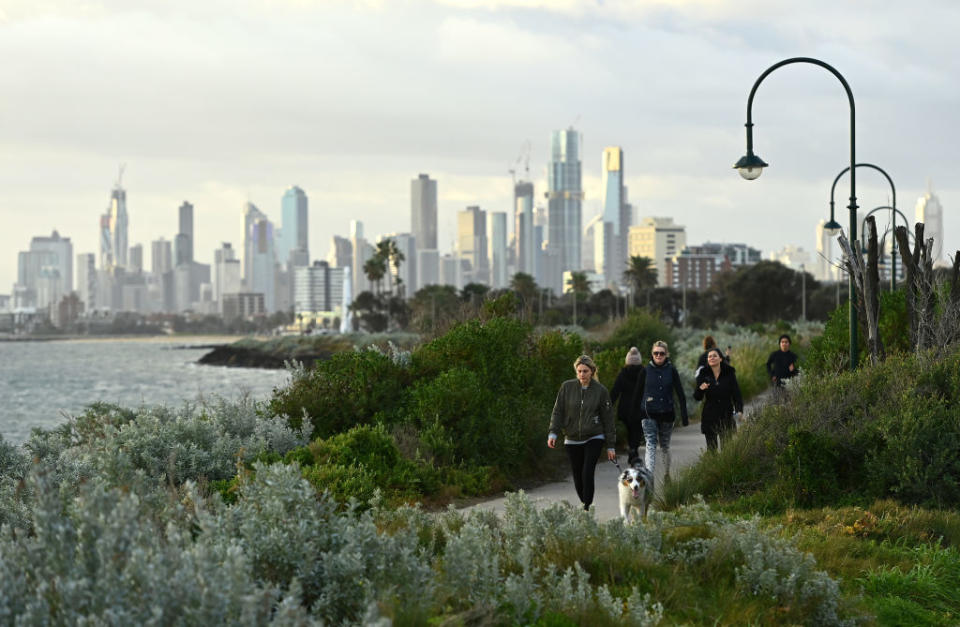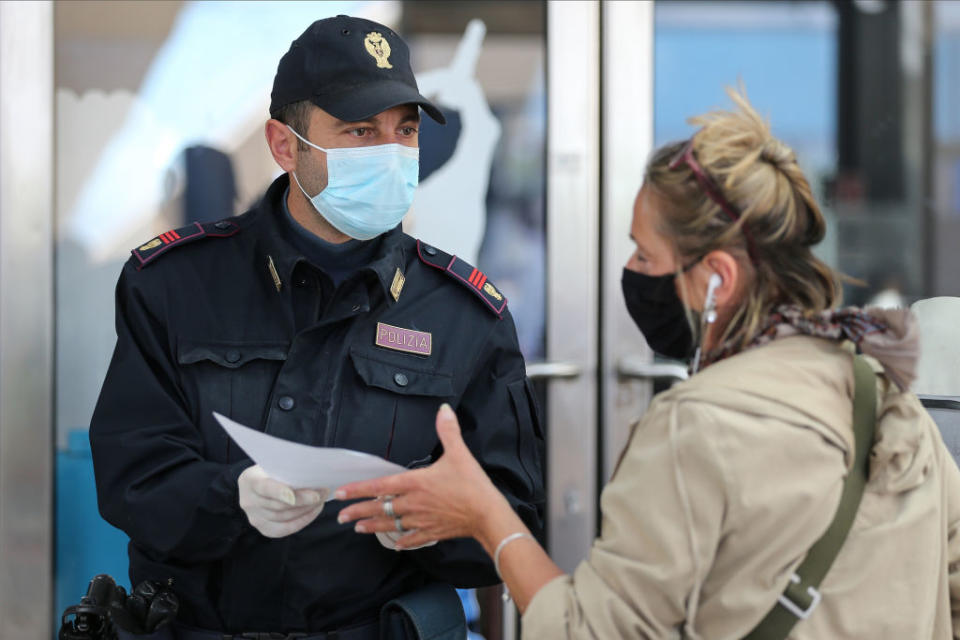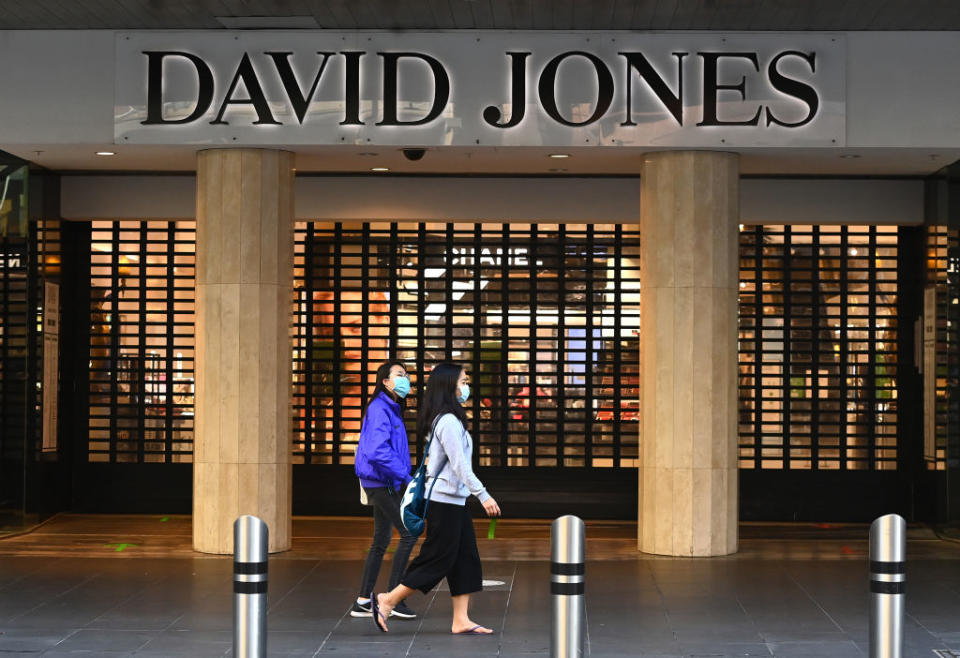Coronavirus Victoria: What 'Stage Four' restrictions could look like
As Victoria’s ‘second wave’ of coronavirus cases shows no signs of slowing down, health authorities have warned “nothing is off the table”.
On Tuesday, the state reported 270 new coronavirus cases, a huge increase on the 177 new cases reported on Monday.
It comes after a whopping 273 cases on Sunday.
Victoria has now had new cases in the triple-digits for nine consecutive days as it enters its second week of a six-week stage three lockdown for the Melbourne Metro area and Mitchell Shire.

But with cases continuing to skyrocket daily, Premier Daniel Andrews and Chief Health Officer Professor Brett Sutton have not ruled out the possibility of a stage four lockdown.
"It's not as high as our biggest single day, but we haven't turned the corner yet," Professor Sutton said of the rise in numbers on Tuesday.
"I hope to see that this week, but there are no guarantees."
He said further restrictions may be considered to curb the spread of community transmission.
"We would do the minimum required, because we know how much of an imposition it is on businesses and people's lives, but if it's required to reduce transmission, then it has to be in play," Professor Sutton said.
Stage four lockdown ‘not ruled out’
It comes after Mr Andrews warned on Monday a stage four lockdown could be imminent.
“We’re not there yet, but I can’t rule out that we have further limits placed on people’s movement,” he told reporters.
“I certainly can’t rule that out.”

He added people had to follow the rules if they did not want to enter a stage four lockdown or for stage three to last longer than the six weeks indicated.
“This is in our hands. It’s a very, very complex, cunning, clever enemy that we’re all fighting, but we can get there if we stay the course, and if we acknowledge that all of us have a really important part to play in that.”
The Victorians currently in lockdown can only leave their home for four essential reasons – to provide care, school or work, exercise and to buy essential items.
But what freedoms would be stripped away if the state decides stage four restrictions are necessary?
What stage four restrictions would look like?
No states in Australia have yet entered a stage four lockdown amid the pandemic, but looking at other countries could give an indication as to how they could be implemented in Australia.
New Zealand announced it would go into a stage four lockdown in March, with movement among its citizens heavily restricted.
People were instructed to stay at home while education facilities were closed and travel was severely limited.
The Prime Minister has announced New Zealand Covid-19 Alert Levels. Here is a table that explains what they mean. This information will be available on the https://t.co/vEvj37KKdO website shortly. pic.twitter.com/1iW7L75AfY
— National Emergency Management Agency (@NZcivildefence) March 20, 2020
Pharmacies, supermarkets, clinics and other essential stores were the only ones allowed to open – meaning stores like Bunnings and Kmart would be forced to close.
Retail expert Professor Gary Mortimer, from Queensland University of Technology, told Yahoo News Australia the government would deem what is an essential and non-essential business.
“And that would include hardware stores like Bunnings, including your corner hardware stores like Thrifty-Link, and large discount department stores like Target and Kmart,” he said.
“The only things which we’ll see open will be supermarkets, pharmacies and service stations but clearly physios, chiropractors and other allied health won’t shut down either.”

In more extreme cases, people could be required to carry “self-declarations” about why leaving the house is necessary.
In Italy, 60 million people were affected by strict lockdowns imposed by the government in March.
Italians were permitted to go to work but they were required to carry the "self-declarations" stating it was necessary. These declarations could be checked and kept by the police.
Travelling for the purpose of getting health care or buying essential supplies was also permitted, as was going out for some exercise – as long as someone was on their own and not in a group.
All cultural, sporting and religious events were cancelled and trips for tourism purposes were to be “absolutely avoided”.
How likely is a stage four lockdown?
There are already calls for a stage four lockdown in Victoria, with Melbourne University epidemiologist Professor Tony Blakely telling news.com.au it would give the state a chance at eliminating the virus.
He suggests essential workers and people leaving the house to go to the supermarket or to use public transport should be required to wear face masks.
Professor Blakely also called for tougher restrictions on businesses.
“There are still a lot of people out there, it’s fairly half baked, we still have department stores open and Bunnings,” he said.

The Victorian Government has not indicated if or when the state would enter a new level of lockdown, but Professor Sutton said the next week would be crucial in telling whether the current lockdown is having the desired effect in lowering cases.
“All options are on the table. We've always said that. We've got this week to assess the effectiveness of the restrictions that have been in place now for just over a week,” he said.
“But we would have an expectation that those numbers are [going down] – if those restrictions are doing what they need to be doing – but we'd also have to dig down to exactly what might be the barriers to not turning the corner, if that's the case.
“Is it people not following the restrictions and it becomes an enforcement and education and awareness issue? Or is it that there's a critical workforce, essential or non-essential workers, that we need to re-examine how to manage the risk for them?”
With AAP and AFP
Do you have a story tip? Email: newsroomau@yahoonews.com.
You can also follow us on Facebook, Instagram and Twitter and download the Yahoo News app from the App Store or Google Play.





